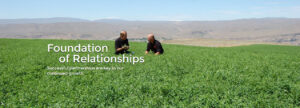Old man winter is knocking on the door. Nights are getting longer, temperatures are dropping, and snow is in the forecast. Are you and your horse ready for winter? You should be prepared to meet your horse’s needs for nutrition, health care, and shelter.

If you haven’t already, now is the time to purchase your hay and get it stored nearby. Timothy and alfalfa hay types are both high-quality forages and should provide the foundation of your horse’s winter diet. One should determine how much hay will be needed to make it to eventual pasture turnout in the spring. Forages should be fed at roughly 2% of your horse’s body weight. So, an average 1000-pound horse should be fed 20 pounds of hay each day. At that rate, you will feed an average-sized horse approximately 600 pounds of hay every month. Use these figures to determine how many tons of hay you will need to feed your horses for the winter. Don’t skimp on hay since fermentation of fiber in the hindgut generates heat that will keep your horse warm. More heat is generated from forages than grains during digestion. For this reason, consider feeding your horse a few extra pounds of hay when temperatures get extremely cold. Additionally, a high-forage diet reduces the chance of starch-induced colic, and feeding high quality hay like timothy and alfalfa can reduce the risk of impaction colic.
Water is an important part of winter nutrition. Adequate daily intake is vital because water is not only an essential component of every cell and tissue in the body; it also plays important roles in nearly every bodily function. Sufficient water intake is important to reduce the possibility of impaction colic in horses as well. Horses may not consume enough water if it is icy cold. Therefore, consider warming the water with bucket or tank heaters to encourage your horse’s water consumption. Providing free choice trace mineralized salt may also stimulate water intake. Remember to also drain hoses before the temperature drops below freezing.
Be sure that your horse’s vaccinations are up-to-date, especially if your horse will be housed in close proximity to other horses. In this case, your horse may be at increased risk for respiratory infections. Horses should also be treated after the first frost with an ivermectin-based dewormer to eliminate bot infestation. Your horse should have a proper hoof trim prior to winter turnout. Think about pulling your horse’s shoes for the winter to reduce ice buildup in the hooves and decrease the chance of slipping on ice. Consult with your farrier for other hoof care options if you believe that your horse needs additional traction for winter use.
Finally, provide your horse a place to shelter away from wind, rain, and snow. Shelter can range from a simple shelterbelt of trees or shrubs to a stall in a barn. Blanketing horses is a matter of opinion and necessity depending on your horse’s body condition and hair coat. Horses that grow an adequate hair coat can easily tolerate temperatures in the 20’s and 30’s, but a wet hair coat offers very little insulation. If you decide that your horse needs to wear a blanket during the winter, now is the time to check for blanket damage that needs to be repaired.
Winter weather and conditions are not always pleasant, but proactive preparation to meet your horse’s needs for nutrition, health, and shelter can make the transition smoother.
To receive this blog from Anderson Hay in your email, subscribe above on the right.


